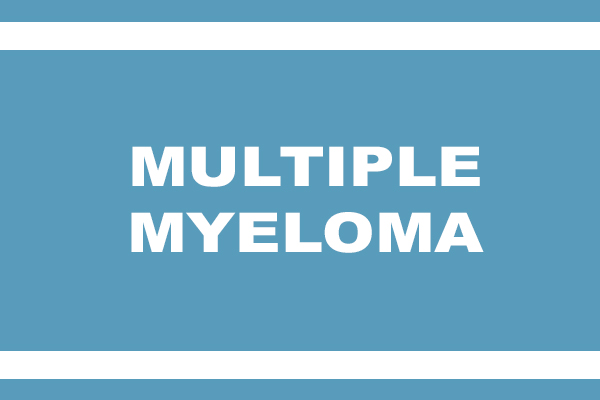Diagnosis: Multiple Myeloma
Plasma cell neoplasms are diseases in which the body makes too many plasma cells. Multiple myeloma is a type of plasma cell neoplasm.
In multiple myeloma, abnormal plasma cells (myeloma cells) build up in the bone marrow and form tumors in many bones of the body. These tumors may keep the bone marrow from making enough healthy blood cells. Normally, the bone marrow makes stem cells (immature cells) that become three types of mature blood cells:
- Red blood cells that carry oxygen and other substances to all tissues of the body
- White blood cells that fight infection and disease
- Platelets that form blood clots to help prevent bleeding
As the number of myeloma cells increases, fewer red blood cells, white blood cells, and platelets are made. The myeloma cells also damage and weaken the bone.
Sometimes multiple myeloma does not cause any signs or symptoms. This is called smoldering multiple myeloma. It may be found when a blood or urine test is done for another condition. Signs and symptoms may be caused by multiple myeloma or other conditions. Check with your doctor if you have any of the following symptoms:
- Bone pain, especially in the back or ribs
- Bones that break easily
- Fever for no known reason, or frequent infections
- Easy bruising or bleeding
- Trouble breathing
- Weakness of the arms or legs
- Feeling very tired
A tumor can damage the bone and cause hypercalcemia (too much calcium in the blood). This can affect many organs in the body, including the kidneys, nerves, heart, muscles, and digestive tract, and cause serious health problems.
In multiple myeloma, abnormal plasma cells (myeloma cells) build up in the bone marrow and form tumors in many bones of the body.
Hypercalcemia may cause the following signs and symptoms:
- Loss of appetite
- Nausea or vomiting
- Feeling thirsty
- Frequent urination
- Constipation
- Feeling very tired
- Muscle weakness
- Restlessness
- Confusion or trouble thinking
Multiple myeloma and other plasma cell neoplasms may cause a condition called amyloidosis.
In rare cases, multiple myeloma can cause peripheral nerves (nerves that are not in the brain or spinal cord) and organs to fail. This may be caused by a condition called amyloidosis. Antibody proteins build up and stick together in peripheral nerves and organs, such as the kidney and heart. This can cause the nerves and organs to become stiff and unable to work the way they should.
Amyloidosis may cause the following signs and symptoms:
- Feeling very tired
- Purple spots on the skin
- Enlarged tongue
- Diarrhea
- Swelling caused by fluid in your body’s tissues
- Tingling or numbness in your legs and feet
Tests that examine the blood, bone marrow, and urine are used to detect and diagnose multiple myeloma and other plasma cell neoplasms.
The following tests and procedures may be used:
- Physical exam and history
- Blood and urine immunoglobulin studies
- Bone marrow aspiration and biopsy. Other tests may be done on the tissue sample that is removed, including cytogenetic analysis, FISH (fluorescence in situ hybridization), and flow cytometry.
- Skeletal bone survey
- Complete blood count (CBC) with differential
- Blood chemistry studies
- 24-hour urine test
- MRI (magnetic resonance imaging)
- PET scan (positron emission tomography scan)
- CT scan (also called CAT scan)
- PET-CT scan
Certain factors affect prognosis and treatment options.
Your multiple myeloma prognosis (chance of recovery) depends on the following:
- The type of plasma cell neoplasm
- The stage of the disease
- Whether a certain immunoglobulin (antibody) is present
- Whether there are certain genetic changes
- Whether the kidney is damaged
- Whether the cancer responds to initial treatment or recurs (comes back)
Multiple myeloma treatment options depend on the following:
- The type of plasma cell neoplasm
- Your age and general health
- Whether there are signs, symptoms, or health problems (such as kidney failure or infection) related to the disease
- Whether the cancer responds to initial treatment or recurs
Your treatment options may include chemotherapy, other drug therapy, targeted therapy, high-dose chemotherapy with stem cell transplant, immunotherapy, radiation therapy, surgery, and watchful waiting. Your doctor will help you determine which treatment option is best for you.
Source: National Cancer Institute, February 2023


